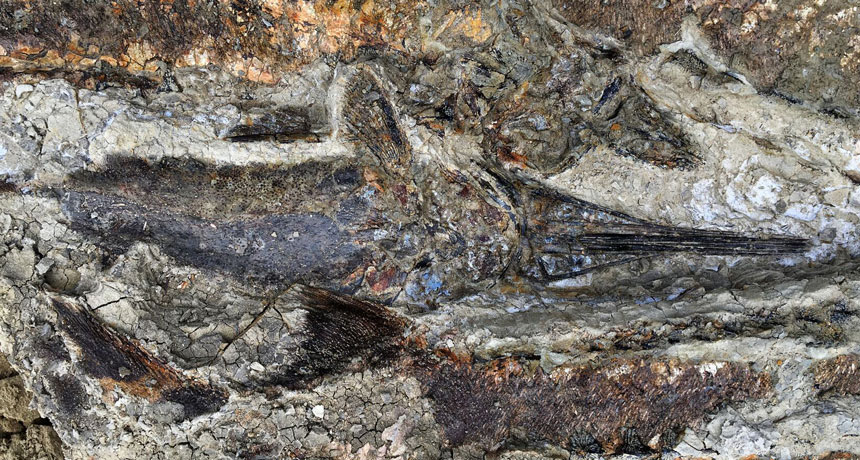How we reported a controversial story about the day the dinosaurs died

DEEP IMPACT These fossil fish, discovered in North Dakota, were swiftly buried in mud due to violent shaking of their watery home. The fossil site, researchers say, gives a never-before-seen view of the day a giant asteroid struck Earth 66 million years ago.
Robert DePalma/University of Kansas
- More than 2 years ago
This is part of the Transparency Project, which explains how we do science journalism. This article refers to a story published in April 2019, “New fossils may capture the minutes after the dinosaur-killing asteroid impact.”
How did you find this story?
This was an unusual story for us because it was based not only on a research paper published in a scientific journal, which is the type of study we usually cover, but also touched on a profile in the New Yorker that described tantalizing findings not mentioned in the research study, particularly suggestions of dinosaur fossils found at Tanis.
Paleontologists’ reactions to the profile tended to range from skeptical to outraged: Finding dinosaur fossils right at the KPg boundary is a big deal, and big claims require big proof; they need to be verifiable by other scientists. Many of the early news stories that emerged were about the controversy and the profile, and the actual research paper got buried in the brouhaha. But I wondered whether the skepticism extended to the much more modest claims of the paper. I felt that there was an interesting science story buried in there.
How did you decide who to speak to for the story?
Even without any dinosaur fossils, I thought the paper was interesting as a possible “snapshot” of the day of the asteroid impact. And I was curious about whether other scientists thought this claim was plausible based on the evidence presented.
I spoke with experts on sediments, on vertebrate and invertebrate fossils, and on the KPg boundary, to get people to weigh in on as many aspects of the evidence as I could. I’ll note that all of the sources that I talked with by phone are mentioned in the story; one source, paleontologist Steve Brusatte, talked with me online but wasn’t able to talk by phone within my limited timeframe, and his quotes didn’t end up in the final version. However, I did feel that the main gist of his concerns about the New Yorker story, that big claims need big proof and that that proof hadn’t been presented, were represented by other voices in the story.
What questions did we ask that we didn’t include?
I had enough material for three different stories, and in the end it came down to what story I thought I could do the most justice to. As the drama unfolded, paleontologist Robert DePalma got a lot of personal and professional criticisms, including suggestions that he was showboating and driving up controversy to get additional press attention.
So I asked my sources, including DePalma himself, about those criticisms. He denied it, as you’d expect, and an early version of the story had a back-and-forth about those claims. But that’s what it felt like – a tedious and kind of predictable back-and-forth – and I decided in the end that unless I wanted to make the whole story about him (which I didn’t) it wasn’t really adding anything new to the conversation. So out went that exchange.
There is another important issue that was left out of my story for space reasons, but which I hope to revisit in future writing: the concern, raised in the profile, over where the fossils discovered at Tanis will be housed and whether they’ll be available to other paleontologists for analysis. The issue of ensuring consistent and clear availability of fossils for future study is a perennial one in paleontology, and is deserving of its own story. Stay tuned.
Read the April 2019 news story here.
 |
Carolyn Gramling is the earth & climate writer for Science News. She has bachelor’s degrees in geology and European history and a Ph.D. in marine geochemistry from MIT and the Woods Hole Oceanographic Institution. Previously, Carolyn worked at Science magazine covering paleontology and polar science and as the editor of the news in brief section. Read more » | |
| About this bio | ||
 | |
| Carolyn Gramling is the earth & climate writer for Science News. She has bachelor’s degrees in geology and European history and a Ph.D. in marine geochemistry from MIT and the Woods Hole Oceanographic Institution. Previously, Carolyn worked at Science magazine covering paleontology and polar science and as the editor of the news in brief section. Read more » | |
| About this bio | |







